People are buzzing with the news that developer Faring’s proposed French Market complex, which will preserve a portion of the original building while adding a new, larger office building at its rear, received final approval from the city’s Planning Commission earlier this month. Many are waxing nostalgic, recalling good times they had at the restaurant while looking forward to more good times to come.
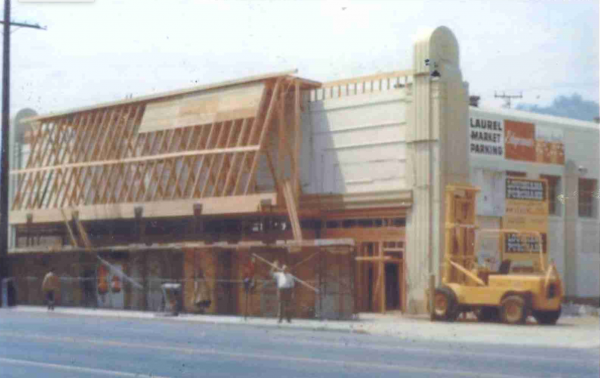
For 42 years, from its opening in 1973 until closing in 2015, the French Market was a West Hollywood institution. It was a favorite gathering spot for locals as well as a hub for the region’s LGBT community and, some would say, the heart of West Hollywood.
Most associate the French Market with its longtime owner, famed restauranteur Arthur J. Simms. While Simms helped put the place on the map, he is not the one who transformed an abandoned supermarket into a restaurant and mini shopping mall. That distinction goes to a young real estate developer named Jay Hartman and his business partner, Manley Marks.
It was Hartman and Marks, joined by Hartman’s wife, Lynda, who decided upon many of the elements that people so closely associate with the French Market. The Hartmans were the ones who chose a New Orleans style décor complete with wrought iron railings, the ones who conceived the signature gazebo in the center of the restaurant, who built a mezzanine level overlooking the dining area, who recruited boutique businesses to fill the shops surrounding the dining area, and, most importantly, who decided to add an outdoor dining patio, a rarity in the early 1970s.
The Hartmans’ contributions to the making of the French Market are often overlooked. In fact, the Environmental Impact Report for that new French Market complex only mentions Hartman’s name once while discussing the site’s history, a passing reference to “J. Hartman,” while Marks was not mentioned at all.
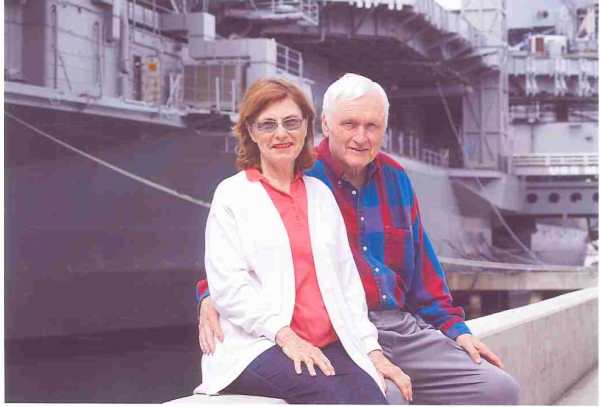
Recently, WEHOville sat down with the Hartmans to discuss their part in the creation of the French Market. Their story provides new insights into the beloved business that became a vital part of West Hollywood.
Raised in Glendale and later Van Nuys, Jay Lee Hartman was an entrepreneur by age 10, buying firecrackers in bulk on trips to Oklahoma to visit his grandparents, then selling them individually to friends in California, where firecrackers were illegal. At age 17, he bought his first piece of real estate – a vacant property in the Antelope Valley – with money saved from his newspaper routes.
In the early 1970s, Hartman was in his early 30s and hungry to make his mark in the real estate world. He was already the owner of several apartment complexes and investment properties but wanted to concentrate on larger commercial projects.
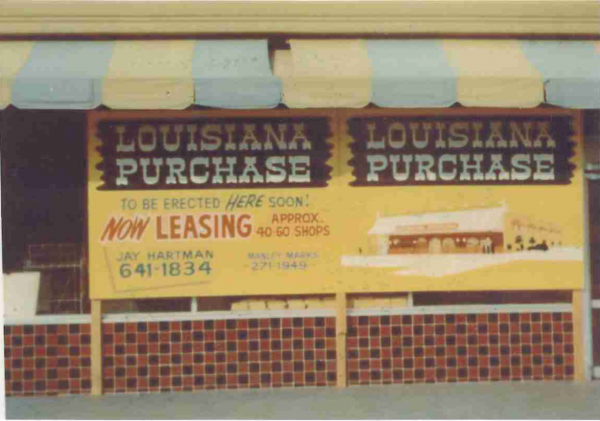
Hartman had long admired successful shopping center developer Manley Marks, 34 years his senior, and one day brazenly went to his house in Beverly Hills unannounced to introduce himself, his ultimate goal being to somehow partner with Marks. His bold plan worked as the two hit it off and soon were remodeling and re-leasing several small SoCal shopping centers.
Enjoying that work tremendously, Hartman sought a larger project and the pair purchased an abandoned supermarket on the northeast corner of Santa Monica Boulevard and Laurel Avenue (just east of Crescent Heights). Constructed in 1936, the vernacular Moderne-style building with a bowstring truss roof had originally housed Fitzsimmons Stores, a small Los Angeles-based grocery chain, as well as a branch of Van de Kamp’s Holland Dutch Bakers. Eventually, it converted to Thriftimart (when that chain acquired Fitzsimmons) and later an Adler Market. In 1969, it became Laurel Market but closed in 1972 due to growing grocery competition in the area.
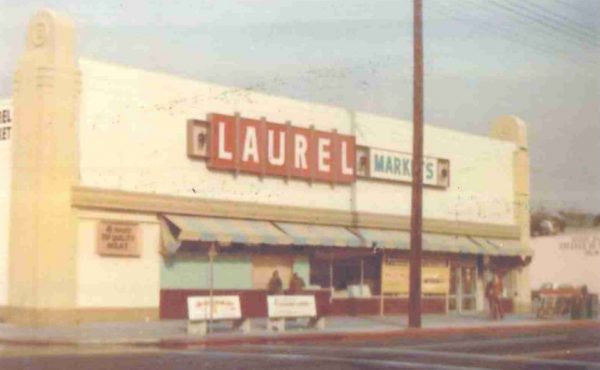
“This was clearly the property we wanted to buy. We probably looked at 50 properties, but I knew this was the right one,” recalled Hartman, now 81 years old. “[Manley Marks] put half of the money and I put half of the money. At the time, I was renting an apartment in Fox Hills while he was living at the top of the hill in Trousdale Estates, so my half of the money was a lot harder to come by than his half.”
Hartman and his new wife, Lynda, a stewardess with Continental Airlines, had been enchanted with New Orleans during a vacation and quickly decided on a New Orleans style décor. As part of that décor, they decided to install a gazebo on a raised platform, with a wine cellar underneath and goldfish pond beside it. That gazebo would become the focal point for the entire complex.
“We loved New Orleans, we loved the French architecture and all the wrought iron in New Orleans,” recalled Lynda Hartman. “We had rented bikes and ridden all over the city. There was nothing like that here [in Los Angeles], so we decided using the New Orleans décor would make it stand out.”
In keeping with the New Orleans theme, they named the new business the Louisiana Purchase. It was Arthur Simms who changed the name of the building to the French Market Place when he bought the property from Hartman and Marks in August 1975.
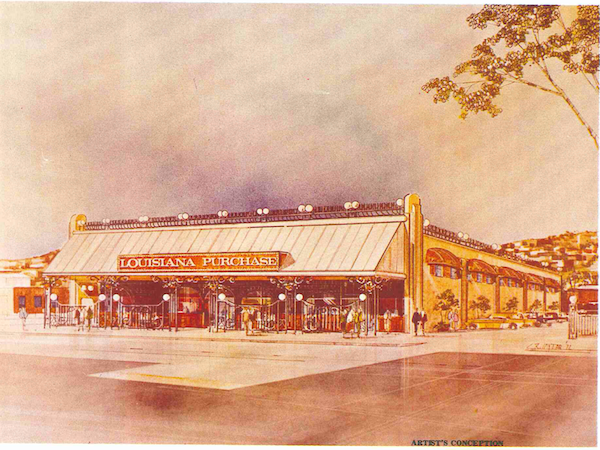
Adding a Mezzanine
With extra high ceilings, the building had space for a mezzanine level overlooking the main dining area. So, Hartman added the second level, the steps leading to the gazebo were continued to the mezzanine, while another set of stairs was added in the rear of the building. On that mezzanine, they created small 50-square-foot and 100-square-foot spaces for boutique shops. They also created spaces for additional shops along the perimeter of the main level.
With the first-floor shops surrounding the dining area in the center and the mezzanine overlooking it, the dining area and gazebo became a sort of town square for this mini-city they created within the building.
Hartman recruited tenants by going door to door and attending swap meets, showing floor plans and renderings of what they wanted the Louisiana Purchase to be. He leased to a variety of shops including arts and crafts stores, clothing stores, a leather shop, a jewelry shop, even a fortune teller. It was fully leased by the time of the grand opening.
“We tried to make smaller places that were economically viable for the smaller tenants,” said Hartman. “It was incubator space for small businesses just starting out.”
The concept of having incubator space for small businesses may be commonplace today, but it was a relatively new idea in the early 1970s. A few other shopping centers had previously done such incubator spaces, including one on Santa Monica Boulevard just west of La Cienega, which is where Hartman got the inspiration.
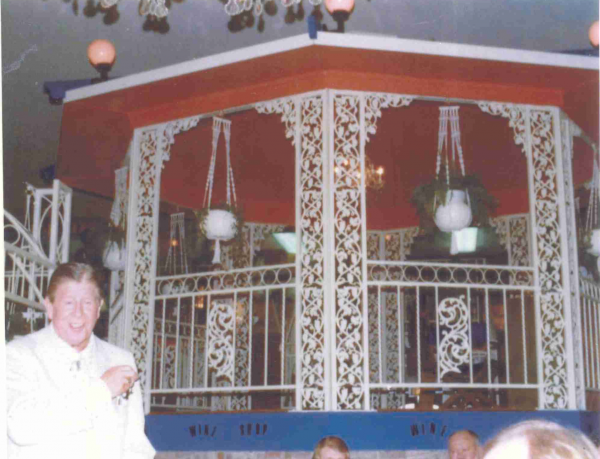
“I really liked the idea of creating spaces for new businesses,” recalled Hartman. “Obviously, we created the mezzanine for the rent revenue, but the shops would also create foot traffic in the building.”
However, when he went to obtain the permits for the building, officials examining the plans were confused by the small shops on the mezzanine.
“They didn’t understand the small modules that were built side by side. They thought it was for sexual purposes,” Hartman laughed. “We tried our best to explain the usage. Finally, they took it to their supervisor. I don’t think we ever convinced him what we were really going to do with the small spaces. He did not believe us.”
The fact the building was next door to the notorious Pink Pussycat burlesque club may have contributed to the problems the officials had understanding the concept.
“The architect and I were just laughing, going, ‘You’ve got to be kidding.’ I’m the last guy to set up something like that,” Hartman said.
Despite a strong push for the shops, including a sign on the side of the building saying “35 Shops Inside,” the boutiques never really took off. The independent arts-and-crafts stores especially struggled financially.
“The fact that [the shops were] were inside the building turned out to be a handicap,” Hartman said. “People didn’t know [the shops] were inside. And even when they did go inside, customers were reluctant to traverse the steps to the second floor. So, the restaurant thrived and the shops on the main level did OK, but the ones upstairs didn’t fare so well.”
Shortly after Arthur Simms purchased the building, he transformed the mezzanine level shops to office space, a concept that did work well.
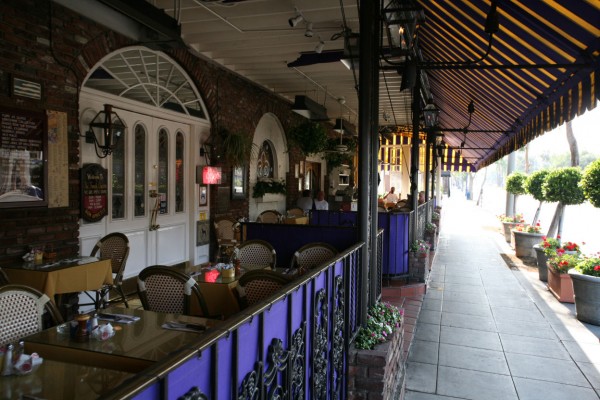
Adding a Dining Patio
Perhaps the most groundbreaking thing the Hartmans did was create a dining patio. With the building set back 20 feet from the street, it was easy to add 11 feet worth of dining patio to the front and then cover it with a faux Mansard roof to protect from the elements.
“We just thought it would be really nice to do it outside,” recalled Lynda Hartman. “We’d seen other places around the world that have outside dining areas. That always added to the charm of a city. We liked the idea and there was space for a dining patio, so we added it to the front of the building. It was something else that would set us apart from other businesses in the area.”
While a dining patio may not seem like a big deal in 2019, it was a revolutionary idea for Los Angeles in 1973. In the years that followed, a few other area restaurants mimicked their dining patio. However, it wasn’t until indoor smoking bans were enacted in the 1990s and zoning laws eased that the dining patio concept took off in earnest in the greater Los Angeles region.
Recruiting Arthur Simms
As construction on the building got underway, Hartman recruited restauranteur Arthur J. Simms, who had already made a name for himself in the early 1950s by starting Ben Frank’s coffee shop on the Sunset Strip, the first store in what became a chain. By the early 1970s, Simms was operating several restaurants, including Arthur Js, a few miles east at Santa Monica Boulevard and Highland Avenue.
“I just approached him [Simms] like I had approached all the boutique stores. I explained the concept for the Louisiana Purchase and showed him the drawings and floor plans,” said Hartman. “He’d had some problems with that location; Santa Monica and Highland wasn’t the nicest area back then, so he was glad for the chance to move west. He signed a long-term lease from the very start.”
Because of the New Orleans décor, Simms decided to change the restaurant name from Arthur Js to The French Quarter. Thomas Simms joined his father in running the new restaurant.
With the restaurant as the anchor, the Louisiana Purchase had its grand opening in late spring 1973, with singer/bandleader Rudy Vallée cutting the ribbon at the opening ceremony. Many celebrities and politicians dined at the restaurant. There was even an ongoing lunchtime fashion show held there during the early years.
Despite having the Pink Pussycat as its next-door neighbor, Hartman reported the two businesses got along well. They shared the 50-space parking lot between the two buildings but didn’t really have any problems since their peak hours were different – Louisiana Purchase was busier during the day, the Pink Pussycat busy at night.
However, the Pink Pussycat did inadvertently pose a problem when they were first painting the building’s exterior. They chose a yellow-beige color, but never could seem to match the color on the east wall with that on the west wall. After several attempts, they finally discovered that the bright pink paint on the Pink Pussycat building was reflecting onto that east wall, changing their perception of the beige color.
While many of the shops struggled, the French Quarter with its mix of French and American cuisine (including French Onion soup) proved popular from very start. Hartman reported that by 1975, two years after opening, the French Quarter was one of the highest volume restaurants in the Hollywood area. In fact, the restaurant was doing so well by 1975, Simms purchased the building from Hartman and Marks for $570,000 (roughly $2.7 million in today’s dollars).
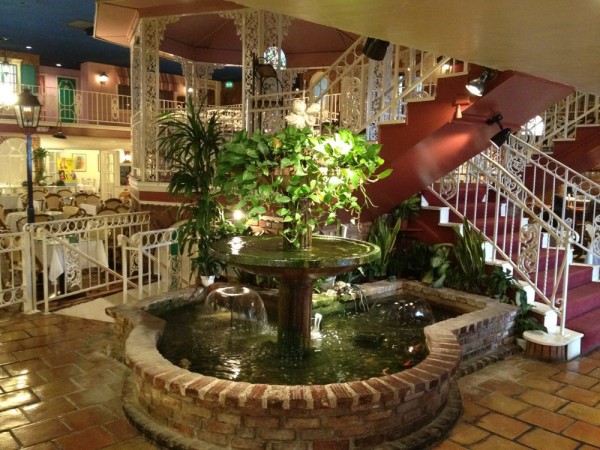
“When [Simms] approached us offering to buy the building, we figured it was a good time to sell,” said Hartman. “Land values were escalating at that time, but the availability of money was still tight for us.”
In addition to changing the building name to the French Market Place, Simms made some minor cosmetic changes such as installing wrought iron railing and trellises around the main dining area, adding a canopy to the gazebo and partially enclosing the east and west ends of the dining patio to protect diners from wind and rain. To welcome customers, Simms also placed a “Let the Good Times Roll” brass sign beside the front doors.
Simms had such success with the French Quarter restaurant, he stated an entire restaurant chain based on it, calling it Mimi’s Café, the first location opening in Anaheim in 1978. However, he retained the French Quarter as a separate entity.
Simms died in 2000, but his heirs kept the French Market until 2010, when they sold it to the Ittah Trust for $6.2 million (building and parking lot), according to Los Angeles County Assessor records. However, Marc Ittah and his business partner Michael Faze were unable to sustain the business and the French Market closed in July 2015.
Development company Faring, owned by West Hollywood resident Jason Illoulian, purchased the building and parking lot in 2016 for $14.7 million, according to Assessor records. Faring originally planned to demolish the building, but responding to public outcry, instead opted to preserve it and add a new, three-story building beside and above it. The exterior walls and the dining patio of the existing building will be preserved, but the interior will be gutted as they dig three subterranean levels beneath it. This new French Market complex received final approval from the Planning Commission in early December.
Meanwhile, Hartman and Marks ended their partnership after Louisiana Purchase but remained close friends until Marks’ death in 1993 (Hartman even served as best man at Marks’ wedding to his second wife, Barbara). Hartman continued as a real estate developer, renovating and selling another 150 residential and commercial properties in the course of his career. He currently owns a large freeway shopping center in Santa Maria plus San Francisco’s Salon Village (on Russian Hill) made up of 33 beauty salons. He also owns the ABC Rehearsal Studios in Silver Lake and North Hollywood, which rents rehearsal space to professional musicians. Despite selling the building, the Hartmans continued to eat at the French Market regularly, even being there on the last day of operation in 2015. The maître d’ always seated them in their favorite place, the gazebo
LGBT Hub
West Hollywood’s large LGBT community contributed greatly to the Louisiana Purchase’s early success. However, neither Hartman nor Simms initially aimed to cater to the gay market.
“The gay clientele was organic, it just happened naturally,” reported Lynda Hartman. “There were a lot of gay people living in the neighborhood, so they came to the restaurant. And they liked a lot of the shops in there too.”
Hartman is proud of the fact gay and straight customers interacted so easily there.
“It was always a mixed restaurant,” Hartman said. “You could go in there, whoever you were, whatever your preferences were, it was there. Very few restaurants could provide that.”
With the gay liberation movement (as it was called in those days) beginning to happen in the 1970s, many of the region’s gay rights groups held meetings there. Some groups even rented office space on the second floor, one of the first being Catholics for Human Dignity, a group founded to fight the 1978 Briggs Initiative which would have barred gay men and lesbians from teaching in California’s public schools.
The Municipal Elections Committee of Los Angeles (MECLA), the area’s first gay political committee which raised funds to back gay-friendly politicians, held its initial meetings there and eventually rented office space there. Similarly, the Stonewall Democratic Club had offices in the building.
In 1991, when former California governor Jerry Brown was considering a 1992 presidential run and sought LGBT support, he met with leaders at the French Market. This was one of the first times, if not the very first, that a major presidential candidate met openly with LGBT leaders.
While those groups played a significant part in furthering LGBT rights in the state, the French Market’s other major contribution to the gay rights movement was more subtle, but equally significant – the dining patio.
That dining patio contributed greatly to increasing gay visibility, offering the first time for LGBT people to dine in plain view from the street at a place that was becoming known for its gay clientele.
In the early 1970s, entrances to gay bars were still generally down alleys or in the rear of the building, away from the preying eyes of the general public. If a gay establishment had windows facing the street, they were usually bricked over or at least darkened, so people couldn’t see in.
But the French Market changed all that. Here people gathered for a meal and a visit with friends just a dozen feet from the street where cars and passersby could easily see them.
Having a meal on a dining patio may not seem significant today, but in the early 1970s, people were still taking a risk being seen in gay establishments. Their reputations could be destroyed, they could lose their jobs for being gay, they could still be arrested for being gay. California didn’t decriminalize homosexuality until 1976.
Even after decriminalization, it could still be risky. In the mid-1980s, Sgt. Mitch Grobson, who became the first openly gay man in the Los Angeles Police Department, was initially outed when a sheriff’s deputy spotted him eating on the French Market patio and reported him to LAPD officials.
Because of the major role the French Market played in the area’s LGBT history, the building is eligible to be designated as a historic site on both a local and state level.
The West Hollywood Preservation Alliance (WHPA) supports that historic designation, especially because of the dining patio. WHPA officials contacted LGBT leaders across the nation and determined that the French Market was one of the first places, if not the very first, to have an outdoor dining space on a major thoroughfare where LGBT people dined openly.
“The single most important historic aspect of the French Market Place was that it was one of the very first examples of the gay community dining on a public terrace on a major thoroughfare – our historic Route 66, Santa Monica Boulevard – without fear of reprisal. That is its role in our cultural history,” said WHPA board secretary Victor Omelczenko.
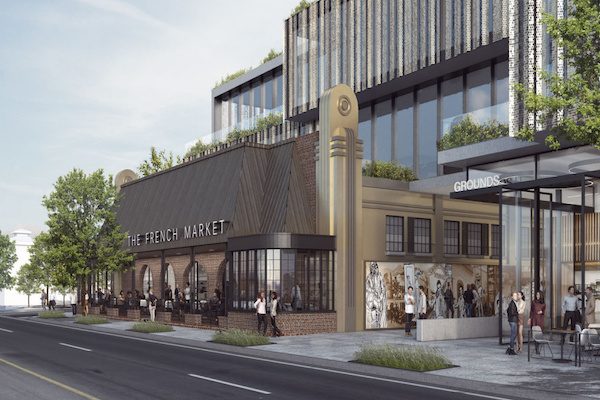
Defacto Student Union
Between the restaurant, shops (the mailbox store and Dorothy’s Surrender gift shop were especially popular) and offices upstairs, the French Market became almost a defacto student union for gays and lesbians, as well as straights. It was not only a place to eat and shop, it was a place to hang out, a place to run into friends and make new friends. It was a place to be seen.
Many a romance began at the French Market. And plenty of romances were ended there as well. During the recent Planning Commission hearing, several public commenters mentioned affairs starting or ending there.
And of course, it was a favorite place to eat. With good food at reasonable prices, residents went there regularly. People met up there for a meal before going out for a night on the town or gathered there to grab a late bite after an evening out. And then they gathered there again for breakfast or lunch the next day.
It’s significant to note that the restaurant’s success came without aid of a liquor license. The restaurant always served beer and wine, but not liquor. In fact, the French Market only obtained a liquor license in 2015, a few months before going out of business. But drinking never seemed to be big part of the French Market experience, which is why it didn’t need a liquor license until the very end.
The French Market was also important for people in 12-step recovery programs in the area. Groups frequently went to the French Market to break bread after attending 12-step meetings held in nearby locations, something often referred to as “the meeting after the meeting.”
The fact the restaurant didn’t hurry patrons away after eating played an essential part in why the French Market served as a defacto student union for West Hollywood. In college, students could hang out in the student union for hours and customers could do the same at the French Market. People often lingered there for hours, sipping on coffee or soda and chatting with friends who came in. That’s why many meetings, both planned and impromptu, occurred there. That also played a large part in why the French Market was so dear to people’s hearts.
“It was where many sexy affairs were started and where many big decisions were made about the future of our LGBT community. It was where many great rendezvous happened,” said longtime activist Nadia Sutton. “That’s why it was so important for West Hollywood and why we remember it so fondly.”

Great article. I live up the street and remember what it was in it’s final days but not beforehand. I think it’s a disgrace what has become of this property over the last 5 years. A shame they have to gut it for parking – more cars on Laurel – great.
Alas, I never saw Jeff Stryker do his walk-through but on the other hand I saw plenty
Angelyne walk-throughs! God I loved the French Quarter and miss it every day!!!
What a wonderful piece!!! Thank you for this incredible historical review that beautifully ties in our LGBTQ story. We need this kind of writing and I’m so glad you provide it!! Thank you!!
The VERY best onion soup in all of LA !
This was the first Gay restaurant I had dinner at when I moved here in 1978. For more than a few years it was the place to go for a decent and inexpensive breakfast . Also, for a cup of whatever after the bars closed.
A friend referred to the French Market as “the campus cafeteria”, because we were so likely to run into friends there on any given day. When I arrived in WeHo in the mid-‘80s, breakfast could be had for $5 – including a generous tip. The varied menu meant one could accept dining invitations there on a regular basis and not grow bored with the (food) offerings. “Dorothy’s Surrender” often saw young men bringing their friends in to show them their photos in … ‘periodicals’. And a Sunday morning walk-through by Jeff Stryker while he was at the peak of his… Read more »
A friend of mine referred to the French Market as Sissy Square.
Wonderful to read an uplifting story in Wehoville and thank you James for your ever insightful journalistic approach.
Kudos to Jason Illoulian and his team who will be continuing the good will and energy of the Hartmans.